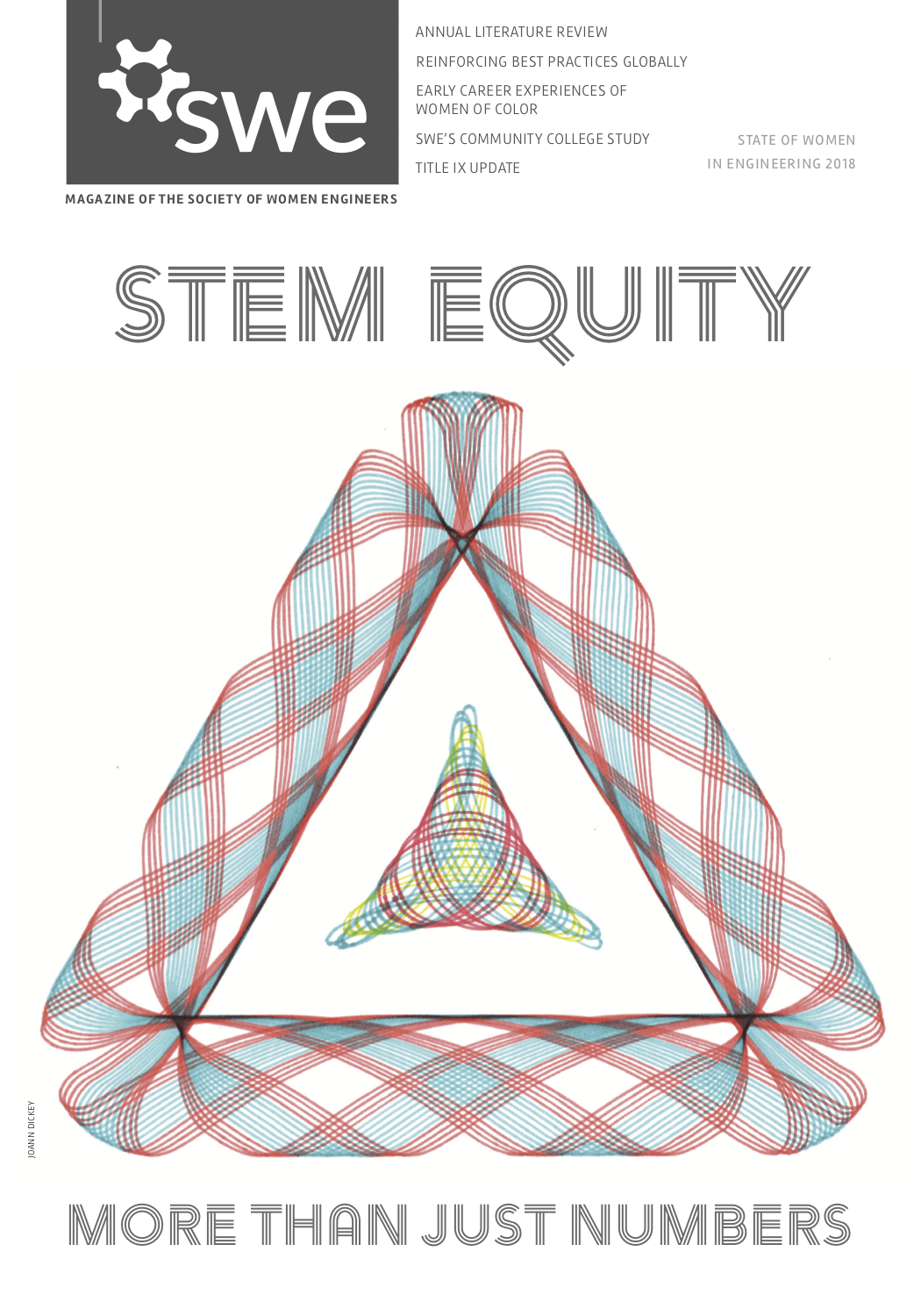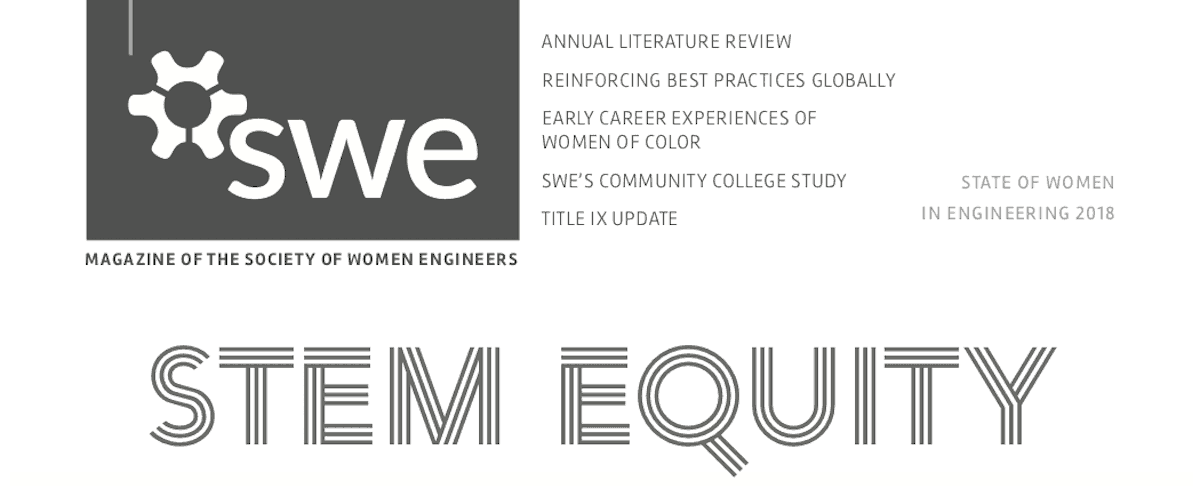 Hundreds of women engineers will advocate on Capitol Hill this week, March 14-15, to make the case for gender equity in the engineering field and extend the momentum of the Women’s March. Led by the Society of Women Engineers, these women come to Capitol Hill in an effort to increase congressional awareness of the importance of diversity and inclusion in the STEM workforce.
Hundreds of women engineers will advocate on Capitol Hill this week, March 14-15, to make the case for gender equity in the engineering field and extend the momentum of the Women’s March. Led by the Society of Women Engineers, these women come to Capitol Hill in an effort to increase congressional awareness of the importance of diversity and inclusion in the STEM workforce.
In addition to their meetings with legislative officials, SWE will be distributing STEM Equity: More Than Just Numbers, a special issue of SWE Magazine containing a review of the most significant research on women engineers and women in STEM disciplines found in 2017, and recommendations for future analysis and study. SWE will be on Capitol Hill March 14-15, 2018.
“Understanding the specific implications of the research we gather, better informs us to develop constructive policies and solutions to the low numbers of women and people of color in STEM professions,” said Karen Horting, CEO and executive director of SWE.
SWE consulted more than 160 books and articles published in 2017 to gather data for the literature review. The data concludes:
- Women are underrepresented in engineering because women are less likely than men to pursue an educational pathway that leads to an engineering degree, despite having appropriate academic preparation and capability;
- The mechanisms that direct young women away from engineering begin early in childhood;
- Engineering workplaces, both in industry and the academy, continue to present challenges to female engineers; and
- There is an urgent need for more research on the culture of engineering and its effects on women.
Some of the key findings are detailed below:
Educators Influence on Women Pursuing STEM
A large group of articles analyzed in 2017 focused on why few women choose to enter engineering programs in college, and there was emphasis on the role played by college faculty in gendering undergraduate education. Schuster and Martiny (2017)[i] found that when stereotypes were activated in experimental settings, e.g., by constructing scenarios in which an oral exam was conducted by a male professor in an obviously predominantly male context, female German university students anticipated less positive affect, which reduced their interest in entering STEM.
Employer Bias Cause of Underrepresentation of Women in STEM Employment
Researchers at Sassler et al. (2017)[ii] analyzed data from the 1979 National Longitudinal Survey of Youth, which involved periodic interviews of participants to track their work aspirations, college studies, and occupational pursuits over time. The researchers were interested in determining whether women’s family expectations or career orientation affected the probability of their successfully making the transition to STEM employment. Their results did not show any relationship of this type: Women with stronger family plans were no less likely to enter STEM jobs than those with a stronger career orientation. Career-oriented men, however, were more likely to enter STEM employment. The authors see evidence of employer bias here — men appear to be rewarded for a strong career commitment while women with similar career orientations are not. Despite this, the authors conclude that the most important reason for the underrepresentation of women in STEM employment is the underrepresentation of women in STEM disciplines.
Women’s Upward Mobility Makes Engineering Seem More Male
One study SWE reviewed took a look at what happens when women succeed in achieving managerial roles in engineering. The study concludes that it may have unintended consequences that strengthen the gendered character of technical engineering. Cardador (2017)[iii] interviewed 61 engineers who were the alumni of an undergraduate engineering program in the U.S. The study found that the movement into management by women was in some ways negative. The women themselves had weaker identifications with engineering (some did not consider themselves to be real engineers). As more women became managers, a kind of gendered occupational segregation developed, with technical roles being seen as masculine and, simultaneously, valued more highly. Ironically, then, women’s upward mobility in engineering made engineering seem more male.
The entire 2017 literature review, STEM Equity: More Than Just Numbers, can be downloaded here.
You can now view SWE Magazine on your mobile device by downloading our app on iTunes or Google Play. Click here to view on a desktop or laptop. The theme of this issue is driven by our annual review of the social science literature regarding women in engineering, now in its 16th year.
Note: This issue is digital only but is available via Amazon with a print on demand option. Visit here to purchase.
SWE Magazine is the official publication of SWE, providing technical tips, professional development and developments in the engineering profession. Subscribe to SWE Magazine. For more information about the Society of Women Engineers, visit swe.org.
About SWE
The Society of Women Engineers (SWE), founded in 1950, is the world’s largest advocate and catalyst for change for women in engineering and technology. The not-for-profit educational and service organization is the driving force that establishes engineering as a highly desirable career aspiration for women. To ensure SWE members reach their full potential as engineers and leaders, the Society offers unique opportunities to network, provides professional development, shapes public policy and provides recognition for the life-changing contributions and achievements of women engineers. As a champion of diversity, SWE empowers women to succeed and advance in their personal and professional lives. For more information about the Society, please visit www.swe.org or call 312.596.5223.
[i] Schuster, C. and S. Martiny (2017). “Not Feeling Good in STEM: Effects of Stereotype Activation and Anticipated Affect on Women’s Career Aspirations.” Sex Roles 76 (1/2): 40–55.
[ii] Sassler, S., J. Glass, Y. Levitte, and K.M. Michelmore (2017). “The Missing Women in STEM? Assessing Gender Differentials in the Factors Associated with Transition to First Jobs.” Social Science Research 63(March): 192–208.
[iii] Cardador, M.T. (2017). “Promoted Up But Also Out? The Unintended Consequences of Increasing Women’s Representation in Managerial Roles in Engineering.” Organization Science 28(4): 597–617.
Author
-
![Women Engineers Advocate on Capitol Hill as SWE Releases Annual Literature Review [] SWE Blog](https://alltogether.swe.org/wp-content/uploads/2021/10/swe-favicon.png)
SWE Blog provides up-to-date information and news about the Society and how our members are making a difference every day. You’ll find stories about SWE members, engineering, technology, and other STEM-related topics.







